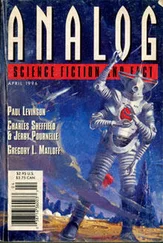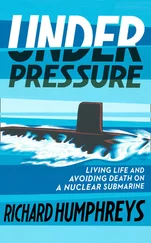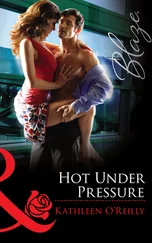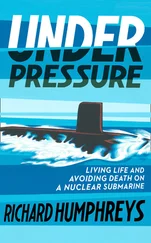1 ...6 7 8 10 11 12 ...17 But it’s important to make a distinction between big-T trauma– reserved for major events like natural disasters and violent incidents, commonly associated with helplessness and loss of control – and little-t trauma, referring to lesser events that are not life-threatening but still carry some emotional impact.
In big-T trauma situations, some people can develop highly distressing memories that come into their mind out of the blue. Some powerful memories called flashbacks actually take us back into the moment as if we were re-experiencing the trauma; the sense that it happened in the past is lost. People suffering from post-trauma syndromes have symptoms of high arousal (feeling jumpy and on edge, experiencing flashbacks) or low arousal (detachment, numbness), or both, often swinging erratically between the two.
Most of us have a lot of little-t and perhaps a few large-T traumas encoded in our memory systems. And some of our first little-t traumatic memories date from the attachment process during our early years.
When we become mobile and our parent starts setting limits, we’re suddenly confronted by the sight of their face showing disapproval of our behaviour, and our urge is to feel shame. It’s an abrupt, painful reaction that leads to silence, avoidance of eye contact, and feelings of isolation. These emotions can be seen in the face of a child before they learn to talk.
How we manage shame in early life plays a major role in how we learn to regulate our emotions. These moments are absorbed as implicit memories and become automatic procedures when similar moments are encountered later. If moments of shame are managed well, we’ll be able to maintain emotional control while experiencing moderate levels of discomfort. But if the attachment traumas become consistent, we’ll feel like we can’t tolerate and cope with the strength of the feeling and develop a strong tendency towards becoming anxious and agitated (over-arousal), or washed out and flat (under-arousal) when we become uncomfortable.
None of us can recall our earliest traumatic experiences. But most of us can remember moments of shame or embarrassment from our schooldays – whether we tripped on the stage at school, fluffed our lines in the school play, failed an exam or missed an open goal.
Our RED system doesn’t forget these moments, because they’re moments of social threat. The RED brain is brilliant at storing these moments away as implicit memories, even if we can’t recall the moments explicitly, so it can warn us if similar situations reappear. When that happens, our RED memory of the event – apparently asleep for years but in reality only resting with one eye open – springs to life. It reminds us, in an instant, of the social threat, and our RED survival system is reactivated. It doesn’t matter that these days we don’t consciously recall the original threat; the RED system makes us feel it anyway.
This explains why we can find ourselves in a performance situation, thinking (with our BLUE mind) that we have it under control, but feeling anxious without really knowing why. Our subconscious mind is recognising some aspect of the current situation that is symbolic of the old event, and the old feelings come up. Some subtle aspect of the situation – a tone of voice, certain words, even a smell – triggers our deeply stored RED memories, and the reactions that follow. Instead of growing large and facing the moment down, we find ourselves shrinking and hesitating under pressure.
Remember the golfer facing the final hole in Chapter 1? He experiences fear not because of a physical threat, but because of the potential judgment of the crowd. He’s undoubtedly faced other situations involving judgment throughout his life. Some of those experiences will have been associated with strong emotions like anger, guilt and grief.
The golfer won’t, and can’t, recall all those situations right now, but he still gets an instant negative emotional hit. The golfer has an unconscious emotional blueprint, which has gradually formed throughout his life, and is now triggered during any situations involving judgment.
In RED–BLUE mind-model terms, uncomfortable feelings like fear occur when our RED mind dominates our BLUE mind. Our ability to face and handle these uncomfortable states provides the template for our performance under pressure.
Although you may not have thought about it this way before, your performances started at birth. When you did something – anything – you performed, and that elicited a reaction, good or bad, from your parents or caregivers. This happened with your first milestones. Then at school. It happened with your friends. At work. On the stage or on the sports field.
Our lives have developed into a sequence of performances, and nuanced emotional interactions with those who watched us. Our responses to this have been encoded as a collection of performance memories. Over time we have developed a highly individual, and strong, mental blueprint relating to performance. It has been built on the numerous occasions in which we felt we have been exposed to judgment, and it is this subconscious blueprint that is activated when we encounter new performance or judgment situations.
Significant physical injuries suffered in the past, or psychological blows such as major losses or humiliations, can all affect our current performance. But the greater the emotional regulation we have, the more we’ll be able to cope with the trials and tribulations of harsh, distressing or even traumatic performance experiences.
What little-t performance trauma can you recall from your childhood or adolescence? What was your emotional reaction at the time? Can you see a link between this and how you react to similar situations now? Do you become too ‘hyper’ and lose your ability to think and feel clearly? Do you become distant or shut down? Or can you cope, recover and recharge yourself to continue with your performance?
The great news is that however our RED system reacts under pressure, we can increase our BLUE control over those reactions, thanks to a property of our brain called plasticity.
As much as our mental blueprint is laid down during our childhood, one of the major discoveries of modern science has been that our brain continues to adapt and adjust itself at the microscopic level throughout our life. Remarkably, if part of the brain is damaged, then other nerve cells, especially the adjacent ones, can sometimes help out to compensate for the loss.
Much like the memories in our brain, the patterns encoded in our nerve-cell networks when we were young still influence how we feel and act in current situations. Like a pathway through a forest, the more we use the same nerve-cell pathway, the clearer and easier it becomes. We find ourselves following the path without really thinking why we are doing it; it just feels natural. Which it is: it is now in our nature to react a certain way in difficult moments.
The opposite is also true. If we stop using a particular pathway, it will become overgrown and not so easy to go down. In a high-pressure situation, every time we resist the urge to escape the discomfort by following a certain path, that nerve-cell escape path is weakened – and the uncomfortable path is strengthened. What we consciously experience is that the urge to escape that moment is reduced and we can tolerate a little more discomfort.
The pathways in our brain are constantly being strengthened and weakened. We strengthen the impulse to escape every time we reward it by moving away from discomfort – and we weaken it every time we tolerate the urge to move away.
Our performance habits are not random. If we want to change our performance under pressure, then we need to change the biology that drives it.
Читать дальше












